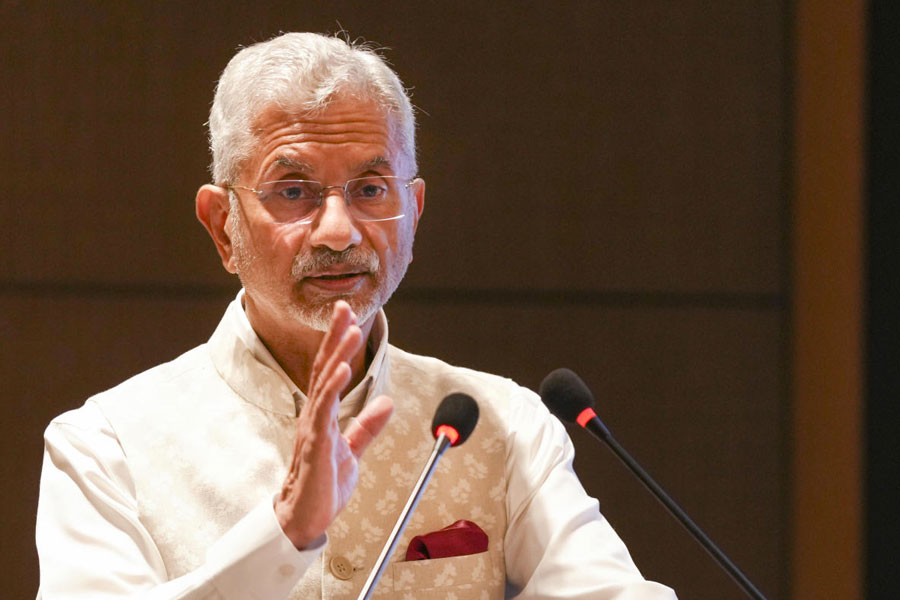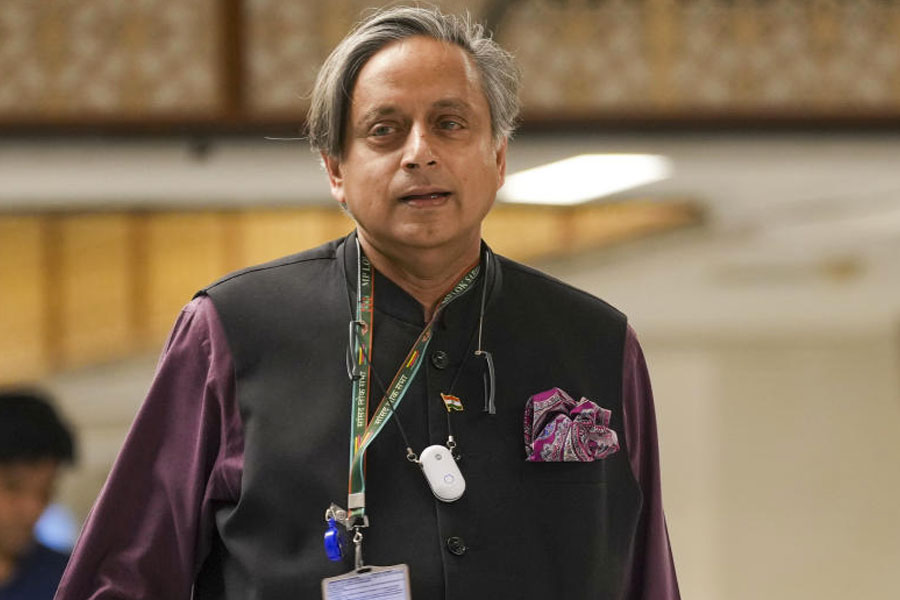|
|
At a time when it was not clear whether she was to be “a genius or a disaster”, the young Sarah Bernhardt decided that photography would certainly boost her morale if not help her career as an actor at the Comédie-Française, the leading theatre in France. She made her way to Gaspard-Félix Tournachon’s atelier in Paris; known as Nadar, the photographer ran the largest if not the best known studio in Paris. He took two portraits of Sarah and the 1864 image became an iconic representation of the young artist. There is no backdrop and no studio props, only as Hans-Michael Koetzle writes in Photo Icons, the stump of an antique-looking column made of papier-mâché on which Sarah’s right arm is placed, her right cheek resting on carefully positioned fingers. She tilts her head and looks into the middle distance; the actor’s left shoulder peeps suggestively out of the burnous (hooded cloak) whose folds are cleverly arranged around her. The contrast between light and dark serves to heighten the almost sculptured look in the portrait that was soon to be regarded as one of the photographer’s most inspired. Apparently, Nadar found “unimaginable enthusiasm” in photographing unknown personalities; shortly afterwards, when Sarah Bernhardt became a legend, the man whose image had no doubt a role in imprinting her in public memory, lost interest in photographing the actor.
Koetzle’s painstaking research not only uncovers various versions of Nadar’s 1864 portrait but also provides a look at the photographer’s mindset; there is no anonymity and no erasure in the relationship between the subject and image-creator. A couple of decades later, Binodini Dasi or Nati Binodini was widely photographed, though little is known about the photographers or the studios she frequented. Among the earliest women on the Indian proscenium stage, Binodini acted in 50 productions — operas, farces and tragedies. Adept at playing male roles as well, she was at the height of her fame when she suddenly retired in 1887. By then, there were many photographs available of her — as Motibibi in Bankim Chandra Chattopadhyay’s Kapalkundala, leaning on the shoulder of Girish Chandra Ghosh, whom she referred to as her ‘guru’, and others in more general poses.
As occupants of public spaces in a range of roles, early women actors and performers quickly accepted the glare of bright lights, publicity and portrayal in the growing print media. In fact, like Sarah, it is possible that they felt the photograph had a significant role to play in helping them achieve iconic status. The photograph actively promoted nostalgia, wrote Susan Sontag; this is particularly so in the case of public personas. For those who lived during a well-known individual’s lifetime, a photograph resulted in an immediate connection, an association, in reverie if not reminiscences. As for those who come generations later, visual images become an important point of reference.
In India, with the expansion of studio and domestic photography, it became de rigueur for middle-class families to record themselves visually. The family of Neelakanta Shastry, a Sanskrit scholar, was no exception. In 1918, when he moved to Madras from Pudukkottai with his wife and eight children, the family photograph had come to occupy space in Shastry’s home. The family settled in a sprawling bungalow on the Adyar estate of The Theosophical Society; the eldest son, Sri Ram, was working for Annie Besant at her New India office. Shastry’s sixth child, Rukmini, was then 15. Shortly after the move, Neelakanta Shastry fell seriously ill and among those from the theosophical circle who used to visit him was the 41-year-old George Sydney Arundale. Soon, he was deeply attracted to the lissome Rukmini and she too was not unmoved. Shortly after Shastry’s death in 1920, the two decided to marry, much to the chagrin of both the Tamilian Brahmin community and the British in Madras. Rukmini’s biographer, the danseuse-turned-administrator Leela Samson, writes in Rukmini Devi: A Life that though her mother, Seshammal, was convinced by Annie Besant to accept the marriage, Seshammal’s brothers were opposed to it and soon a campaign espousing moral indignation was launched in The Hindu and other newspapers.
The couple remained unfazed, and several photographs of them together (photo) and indeed of various phases of Rukmini’s life have been preserved. Soon, Rukmini started travelling with her husband, mainly on work for The Theosophical Society. One of her most memorable trips was to London where she watched enthralled the leading ballerina, Anna Pavlova, dance. Subsequently, she met Pavlova in Australia where, noting the young woman’s admiration, the gracious dancer gave her a few lessons. As a child, Rukmini had been fascinated by Sadir or the dance form practiced by devadasis, girls and women dedicated to the temple. Though her involvement with The Theosophical Society kept her preoccupied, her interest in dance was never absent. In 1932, after a performance by the two outstanding Pandanallur sisters, Rukmini was determined to learn and that too from an established teacher; she soon joined the devadasi, Gowri Ammal, perhaps the greatest teacher of her time. More raised eyebrows followed as Rukmini became the first Brahmin girl to step into the world of Sadir. On December 30, 1935, the 31-year-old gave her first performance — and there was no going back. Critics were forced to say that they had had no idea that Sadir could take on such a form. As the cameras swung into action, Rukmini Devi Arundale, the new icon of dance in India, was born.
It was clear that though “she was responding to an instinct... soon the dance would develop into a passion”. George Arundale, president of The Theosophical Society, felt that dance expressed through his wife would be energized by a rare spiritual quality. In 1936, Rukmini Devi established the International Academy of Arts that four years later was to grow into Kalakshetra. As students flocked to the academy, it was clear that Rukmini had brought about nothing short of a revolution in conservative Brahmin society. A part of her strategy was to initiate change in existing notions of respectable femininity and of how the female body was to be represented. Rukmini now renamed Sadir as Bharat Natyam and moved towards choreographing dance dramas as well, including a sensitive rendering of Edwin Arnold’s Light of Asia. In 1945, a mere 10 years after she had started dancing, Rukmini conducted the arangetram (debut performance) of one of her students: as she had decided to train women to be nattuvanars (expert musicians who would conduct the entire recital), she set the pace herself. The costumes, too, were modified to suit her new aesthetic.
As several portraits of Rukmini Devi, of solo performances as well as of dance dramas, of musicians and students became available, the creation of the new genre was helped by strong visual support. The lenses of the well-known Madras photographer C.T. Nachiappan, and later of Raghavendra Rao and others, helped in creating a significant photographic archive of Rukmini Devi Arundale and Kalakshetra. Rukmini Devi became a household name not only among the artistic cognoscenti but also among animal lovers and those interested in the revival of traditional weaving. Soon, the Kalakshetra sari was greatly valued and Rukmini Devi’s commitment to other living beings resulted in the establishment of the Animal Welfare Board of India. In 1952, she was nominated a member of the Rajya Sabha and combined her life as a parliamentarian with many other preoccupations.
Rukmini Devi clearly belonged to the emerging generation of Indian women whose determination and vision — and, of course, capacity to absorb criticism — gave them a distinct edge. While, in the initial years, George Arundale and The Theosophical Society were great supports, Rukmini soon had the confidence to seek publicity wherever necessary, either through skillfully taken photographs or the odd interview in the press. As in the case of Sarah Bernhardt and Nati Binodini, a rich body of visual and textual material has greatly aided in the preservation of Rukmini Devi Arundale’s unquestioned iconic status in the field of creative expression for generations of dancers, musicians and aficionados.











